Have you ever wondered what it would be like to taste the flavors of a culture that has been passed down through generations? Well, get ready for an unforgettable gastronomic journey as we take you through the indigenous cuisine of Suriname.
Suriname, a small country located on the northeastern coast of South America, is truly a melting pot of diverse cultures. This cultural diversity is beautifully reflected in its cuisine, which combines influences from the indigenous tribes, African slaves, and Dutch colonizers. From mouthwatering stews to exotic fruits, Suriname’s indigenous cuisine is a culinary adventure waiting to be explored.
In this article, we will delve into the rich and flavorful dishes that define Suriname’s indigenous cuisine. Get ready to tantalize your taste buds with dishes like roti, saoto soup, and pom. We will also explore the unique ingredients and cooking techniques that make these dishes so special. So, whether you’re a foodie looking to broaden your culinary horizons or simply curious about the cultural heritage of Suriname, this article will be your guide to an unforgettable gastronomic journey. Stay tuned for more mouthwatering details in the upcoming sections!
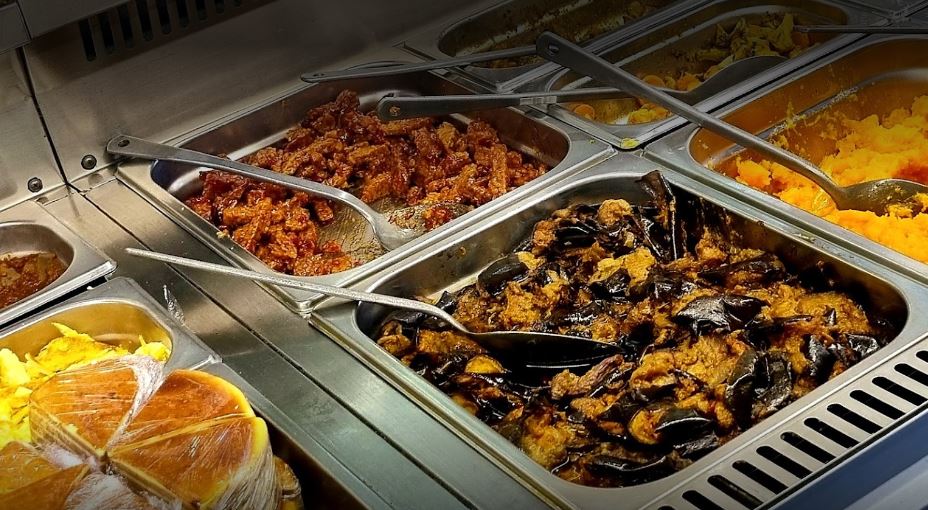
Overview of Suriname’s Indigenous Cuisine
Suriname, a small country on the northeastern coast of South America, is home to a rich and diverse culinary heritage. Its indigenous cuisine offers a unique fusion of flavors, drawing influence from various cultures such as African, Indian, Indonesian, and European. The traditional dishes, diverse ingredients, and cultural significance of Surinamese indigenous cuisine make it an unforgettable gastronomic journey worth exploring.
Traditional Dishes That Are Part of Surinamese Indigenous Cuisine
Suriname’s indigenous cuisine boasts a wide array of traditional dishes, each with its own distinct flavors and characteristics. One such dish is “Pom,” a savory cassava-based dish typically made with chicken or pork. The cassava is grated and mixed with spices, meat, and vegetables, then baked to perfection. Another popular dish is “Roti,” an Indian-inspired flatbread served with various fillings such as curried vegetables, chicken, or beef. The flavors of the spices meld beautifully with the soft and chewy roti bread.
Saoto Soup is another must-try dish in Surinamese indigenous cuisine. With its origins in Indonesia, this flavorful chicken soup is made with a rich broth infused with spices and served with chicken, bean sprouts, and fried onions. Moksi Alesi, a rice and bean dish cooked with various meats such as chicken, pork, or salted beef, is also a beloved staple of Surinamese cuisine.
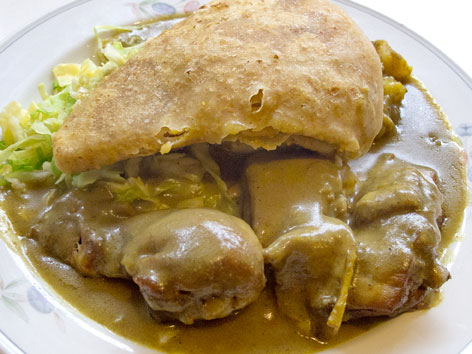
Diverse Ingredients Used in Surinamese Indigenous Cuisine
Surinamese indigenous cuisine showcases an impressive variety of ingredients, many of which are native to the region. One such staple is cassava, a root vegetable used in numerous dishes. Cassava is transformed into cassava flour and used as a base for bread, porridge, and other dishes.
Tayer, a starchy tuber with a nutty flavor, is another essential ingredient in indigenous cuisine. It is often boiled, mashed, or used in soups and stews. Bitterbant, a leafy green vegetable with a bitter taste, is frequently added to dishes for its unique flavor profile.
Other notable ingredients used in Surinamese indigenous cuisine include plantains, okra, coconut, various spices such as cumin, coriander, and turmeric, and seafood such as shrimp and freshwater fish. The diverse range of ingredients adds depth and complexity to the flavors found in Surinamese dishes.
Cultural Significance of Indigenous Cuisine in Suriname
Indigenous cuisine plays a significant role in preserving Suriname’s cultural heritage. It reflects the history, traditions, and values of the indigenous communities that have inhabited the region for centuries. Through their food, these communities connect with their ancestors and pass down their culinary traditions from generation to generation.
Food also holds a special place in community celebrations and rituals. Festivals and gatherings are often centered around traditional dishes, where community members come together to share meals, stories, and experiences. These communal feasts not only nourish the body but also strengthen the bonds within the community.
Additionally, indigenous cuisine in Suriname embraces sustainable farming practices. Traditional cultivation methods, such as agroforestry and polyculture, promote biodiversity and minimize the impact on the environment. The use of organic and locally sourced ingredients further emphasizes the connection to the land and the importance of preserving it for future generations.
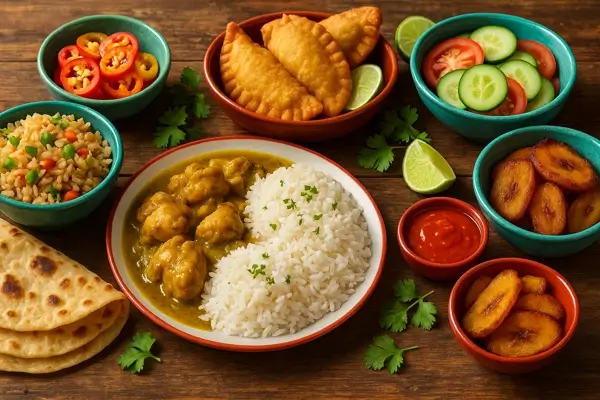
Influences on Surinamese Indigenous Cuisine
Surinamese indigenous cuisine has been shaped by various influences throughout history. The arrival of European colonizers brought new ingredients, cooking techniques, and flavors to the region. Dutch, British, and French influences can be seen in dishes such as “pom” and the use of ingredients like potatoes and onions.
Indigenous cooking techniques and methods also contribute to the unique flavors and textures found in Surinamese cuisine. The use of fire, both for grilling and smoking meats and fish, adds a distinct smoky flavor. Clay pots are often used for slow cooking, allowing flavors to meld together over time.
In addition to European influences, the Afro-Surinamese and Javanese communities have also left their mark on indigenous cuisine. African culinary traditions have integrated with indigenous ingredients, creating dishes that blend the best of both worlds. Javanese influences can be seen in the use of spices and the preparation of dishes such as “roti.”
Popular Surinamese Indigenous Dishes
Several dishes have gained popularity and become staples in Surinamese indigenous cuisine. These dishes reflect the diverse influences and flavors found in the region.
- Pom: A savory cassava-based dish with chicken or pork, baked to perfection.
- Roti: An Indian-inspired flatbread served with various fillings such as curried vegetables or meat.
- Saoto Soup: A flavorful chicken soup with Indonesian origins, served with bean sprouts and fried onions.
- Moksi Alesi: A rice and bean dish cooked with various meats such as chicken, pork, or salted beef.
These dishes showcase the vibrant fusion of flavors found in Surinamese indigenous cuisine and are enjoyed by locals and visitors alike.
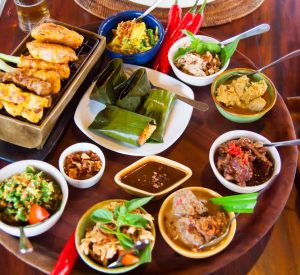
Unique Ingredients in Surinamese Indigenous Cuisine
Surinamese indigenous cuisine boasts several unique ingredients that contribute to its distinct flavors and textures.
Cassava, a staple root vegetable, is used in various forms such as flatbreads, porridges, and cakes. It is known for its versatility and nutritional value, providing a good source of carbohydrates.
Tayer, a starchy tuber with a nutty flavor, is often used as a substitute for potatoes in dishes such as stews and soups. Bitterbant, a leafy green vegetable with a bitter taste, is used to add depth and complexity to dishes.
Other unique ingredients include plantains, okra, coconut, various spices such as cumin, coriander, and turmeric, as well as seafood such as shrimp and freshwater fish. These ingredients contribute to the rich tapestry of flavors in Surinamese indigenous cuisine.
Traditional Cooking Techniques
Surinamese indigenous cuisine utilizes traditional cooking techniques that have been passed down through generations. These techniques not only enhance the flavors of the dishes but also contribute to their cultural significance.
Grilling over an open fire is a common cooking method in Surinamese indigenous cuisine. The use of charcoal or wood imparts a smoky flavor that is characteristic of many dishes. Meats, fish, and vegetables are often grilled to perfection, infusing them with a delightful smokiness.
Smoking meats and fish for preservation is another traditional cooking technique. By exposing the food to smoke, it can be preserved for longer periods, ensuring a steady food supply in times of scarcity. This technique also adds a unique smoky flavor that enhances the taste of the dish.
Using clay pots for slow cooking is yet another traditional technique employed in Surinamese indigenous cuisine. Clay pots distribute heat evenly, allowing flavors to meld together over time. This slow cooking method results in tender meats and rich, aromatic stews.
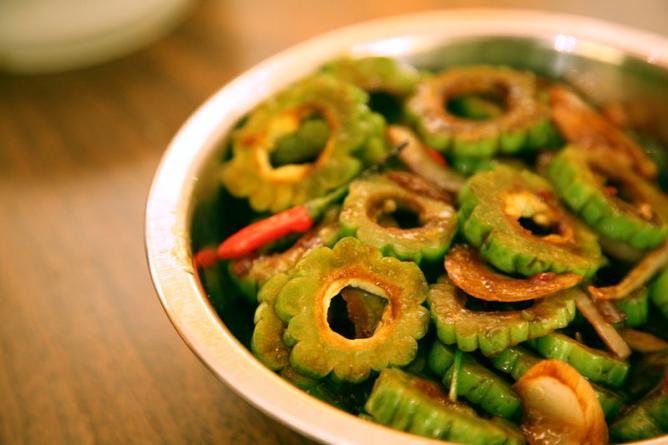
The Significance of Indigenous Cuisine in Suriname
Indigenous cuisine in Suriname holds great significance beyond its exceptional flavors. It plays a vital role in preserving cultural heritage, promoting community engagement, and supporting sustainable practices.
By celebrating and preserving indigenous cuisine, Suriname honors the traditions and knowledge passed down from previous generations. In doing so, it ensures that future generations will be able to appreciate and connect with their cultural roots.
Food also serves as a powerful tool for community celebrations and rituals. Festivals and gatherings centered around traditional dishes create opportunities for community members to come together, share experiences, and strengthen bonds. These communal feasts contribute to the social fabric of Surinamese society.
Furthermore, indigenous cuisine is deeply intertwined with sustainable farming practices. Traditional cultivation methods prioritize biodiversity and minimize the impact on the environment. The use of fresh, organic, and locally sourced ingredients reflects a commitment to responsible stewardship of the land.
Surinamese Indigenous Cuisine and Tourism
Suriname’s indigenous cuisine has not gone unnoticed by tourists seeking authentic cultural experiences. The country offers a range of opportunities to explore and indulge in indigenous culinary traditions.
Popular indigenous food festivals showcase the diverse flavors of Surinamese cuisine. These festivals allow visitors to sample traditional dishes, watch cooking demonstrations, and learn about the cultural significance of food in the region.
Local markets and street food stalls provide a more casual, yet equally delightful, way to experience Surinamese indigenous cuisine. Here, visitors can soak up the vibrant atmosphere while sampling an array of mouthwatering dishes.
For those looking to delve deeper into the culinary traditions of Suriname, culinary tours and cooking classes offer immersive experiences. These activities provide a hands-on opportunity to learn traditional recipes, cooking techniques, and the stories behind each dish.
Exploring the Indigenous Cuisine of Suriname
To truly savor the flavors of Surinamese indigenous cuisine, there are several must-visit restaurants and eateries across the country. These establishments showcase the authentic and diverse tastes of the region.
In indigenous villages, you can experience traditional food in its purest form. These villages offer a glimpse into the daily lives of indigenous communities, where food preparation and sharing are integral parts of their cultural identity.
In addition to traditional cuisine, Suriname’s culinary landscape has been influenced by other cultures, resulting in a fusion of flavors. The country’s capital, Paramaribo, is a hub for innovative restaurants and eateries that blend traditional and modern elements, creating exciting and unique dining experiences.
Health Benefits of Surinamese Indigenous Cuisine
Surinamese indigenous cuisine not only tantalizes the taste buds but also offers numerous health benefits. Many traditional ingredients are packed with essential nutrients, making them a nutritious choice.
Cassava, a staple ingredient, provides a good source of carbohydrates, fiber, and minerals. It is also gluten-free, making it suitable for those with dietary restrictions.
Fresh and organic produce is commonly used in Surinamese indigenous dishes. Locally sourced fruits, vegetables, and seafood contribute to a balanced and wholesome diet. These ingredients offer a wide range of vitamins, minerals, and antioxidants to support overall health.
The traditional cooking techniques employed in indigenous cuisine, such as grilling and slow cooking, retain the nutrition and flavors of the ingredients. The careful preparation and cooking methods ensure that the dishes are both delicious and nutrient-dense.
Promoting and Preserving Surinamese Indigenous Cuisine
Efforts to promote and preserve Surinamese indigenous cuisine are crucial to sustaining cultural heritage and supporting local communities. Several initiatives are in place to achieve these goals.
Educational initiatives focus on preserving indigenous culinary skills and passing them on to future generations. With workshops and training programs, young community members are taught traditional recipes, techniques, and the significance of indigenous cuisine.
Supporting local farmers and indigenous communities is another essential aspect of preserving Surinamese indigenous cuisine. Buying ingredients directly from local farmers ensures that communities are economically empowered. As consumers, we can also contribute by choosing to purchase and support indigenous products.
Campaigns to raise awareness about indigenous cuisine and its cultural significance play a vital role in promoting cultural appreciation. These campaigns highlight the uniqueness of indigenous culinary traditions and encourage visitors and locals alike to explore and experience the flavors of Surinamese indigenous cuisine.
The Future of Surinamese Indigenous Cuisine
As Suriname continues to evolve, the future of indigenous cuisine is subject to innovation and fusion. While traditional recipes and techniques will always hold great importance, they will inevitably be influenced by global trends and changing preferences.
Innovation in indigenous culinary practices can lead to the creation of exciting dishes that blend traditional elements with modern approaches. Chefs and home cooks alike are exploring new ingredients, techniques, and flavors to create innovative and visually stunning dishes.
However, as the culinary landscape evolves, it is crucial to ensure that cultural identity and traditions remain at the forefront. Preserving and celebrating Surinamese indigenous cuisine requires a delicate balance between innovation and maintaining the authenticity of traditional recipes.
Environmental Sustainability in Indigenous Cuisine
Surinamese indigenous cuisine inherently promotes environmental sustainability through its traditional farming practices and ethical sourcing of ingredients. These practices minimize the impact on the environment and foster a deeper connection with nature.
Ethical sourcing of ingredients is a fundamental principle of indigenous cuisine. By supporting local farmers and purchasing locally sourced produce, indigenous communities contribute to the preservation of biodiversity and reduce their carbon footprint.
Furthermore, indigenous farming practices prioritize the use of organic and sustainable methods. Traditional techniques such as agroforestry and polyculture promote biodiversity, soil conservation, and water management. These practices are essential in mitigating the environmental impacts of agriculture.
The use of traditional clay pots for cooking also aligns with the principles of sustainability. Clay pots are a sustainable alternative to modern cooking utensils, as they are made from natural materials and do not release harmful chemicals into the environment.
Indigenous Cuisine and Social Justice
Indigenous cuisine in Suriname has the power to empower indigenous communities through food. By highlighting their culinary traditions, indigenous communities gain recognition for their cultural contributions and strengthen their position in society.
Promoting inclusivity and cultural appreciation is essential in the context of indigenous cuisine. Through cultural exchange and understanding, Suriname can foster a society that respects and values the diverse cultures that exist within its borders.
Challenges persist in supporting indigenous rights and preserving their traditional lands and practices. Initiatives that support indigenous communities by providing access to resources, education, and opportunities can help bridge the gap and address these challenges.
By honoring and celebrating indigenous cuisine, Suriname takes a step towards social justice and acknowledges the integral role that indigenous communities play in shaping the country’s identity.
Conclusion
The indigenous cuisine of Suriname is a treasure trove of flavors and culinary traditions that captivate the senses and tell a story of the region’s rich history. The fusion of various influences, diverse ingredients, traditional cooking techniques, and cultural significance make Surinamese indigenous cuisine a truly unique gastronomic journey.
By preserving and promoting indigenous cuisine, Suriname celebrates its cultural heritage, supports sustainable practices, and showcases the immense wealth of culinary traditions within its borders. Whether you’re exploring traditional dishes in indigenous villages, indulging in fusion flavors in urban eateries, or attending vibrant food festivals, Suriname’s indigenous cuisine promises an unforgettable gastronomic adventure.